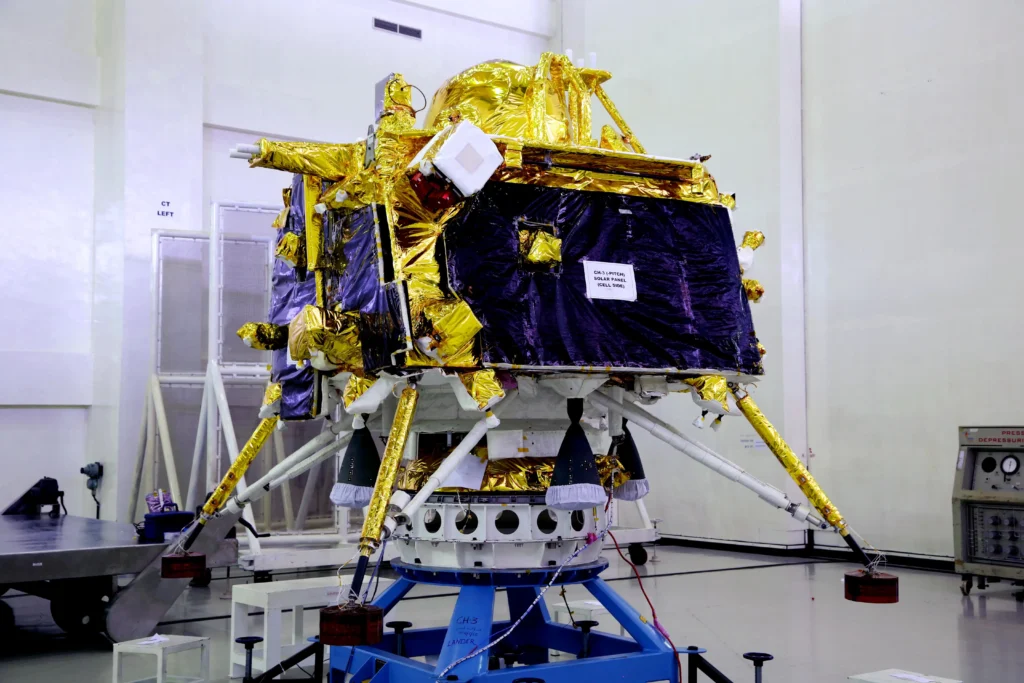The descent platform with the lunar rover successfully separated from the Chandrayaan-3 flight module. This is stated in a message published by the Indian Space Research Organization (ISRO).
Technical design and main tasks of Chandrayaan-3
The Chandrayaan-3 mission was approved by the Indian government in 2019. It should carry out what its predecessor, Chandrayaan-2, failed to do, and make a soft landing in the southern circumpolar region of the Moon.

According to its design, the Chandrayaan-3 consists of a 2,148-kilogram flight module and a 1,752-kilogram descent platform. The latter is equipped with scientific instruments designed to study the thermal characteristics of the lunar regolith, the properties of near-surface plasma and seismic activity. There is also a corner reflector on board the platform.
But still, the most interesting cargo on board the platform is a 26-kilogram lunar rover. It is equipped with instruments designed to conduct research on the mineralogical composition of the lunar surface. Both the lunar rover and the platform are designed to work for one lunar day (14 Earth days). But in theory, they can work more. According to ISRO experts, their tests have shown that the platform and the lunar rover are able to survive the lunar night. If they manage to recharge their batteries and get in touch with Earth, their mission will be extended.
Successful separation in lunar orbit
Chandrayaan-3 went into space on July 14. After entering Earth orbit, it began to perform a series of course corrections that gradually increased its apogee. On August 5, Chandrayaan-3 performed a key maneuver that allowed it to move into a permanent orbit around the Moon.
Chandrayaan-3 Mission:
‘Thanks for the ride, mate! ????’
said the Lander Module (LM).LM is successfully separated from the Propulsion Module (PM)
LM is set to descend to a slightly lower orbit upon a deboosting planned for tomorrow around 1600 Hrs., IST.
Now, ???????? has3⃣ ????️????️????️… pic.twitter.com/rJKkPSr6Ct
— ISRO (@isro) August 17, 2023
The next step was separation. On August 17, the descent platform separated from Chandrayaan-3. ISRO already confirmed that the operation was a success. In the coming days, the descent platform will make a number of course corrections that are necessary for its landing. It is scheduled for August 23.
As for the flight module, it will remain in a selenocentric orbit and will be used as a data relay. In addition, it is equipped with the SHAPE scientific tool. The device will measure the spectral and polarimetric characteristics of the Earth. The data it collects will be useful to scientists studying Earth-like exoplanets.
Follow us on Twitter to get the most interesting space news in time
https://twitter.com/ust_magazine
